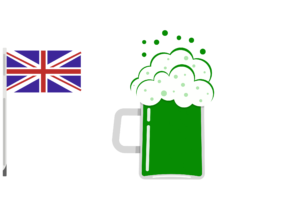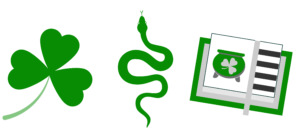St. Patrick and his regulatory journey
Published on 16th March 2022
TRAFFICKING AND SLAVERY
St. Patrick, before he was a saint, was living in Britain. As a teenager, he was captured by an Irish raiding party who trafficked him, selling him on as a slave to a local chieftain called Milcu.
There is now a lot of regulation around trafficking and slavery. When we took a look at our regulatory content, at themes of human and child trafficking filtering by regulatory development on our Regulatory Monitoring Solutions, we find 695 documents and over 700 for slavery. If these regulations had been around, they may have changed the course of his life.

BREXIT AND GREENWASHING
6 years a slave, St.Patrick tended sheep on Slemish mountain in County Antrim which is located in the part of the island of Ireland now known as Northern Ireland.
A product of the Brexit negotiations was the “Northern Ireland Protocol“, which if St.Patrick was here today he’d probably be all to familiar with as he is associated with the entire island of Ireland and not just one or other side of the border. I wonder what paperwork is needed to move sheep across the border today? We currently show 40 items of published regulatory content relating to the Northern Ireland Protocol on our Regulatory Monitoring solution.
It is said that St. Patrick wore the same green tunic he arrived in for the entire time of his slavery. But if he’d washed it, it wouldn’t be classed in today’s terms as “greenwashing”. Green is very much the colour associated with St.Patrick, but the term greenwashing, was originally coined in 1986 by prominent environmentalist Jay Westerveld. His new term related to hotels asking guests to reuse towels to save the environment but actually allowing hotels to enjoy lower laundry costs. In financial services the EU Taxonomy Regulation states that greenwashing refers to the practice of gaining an unfair competitive advantage by marketing a financial product as environmentally friendly, when in fact basic environmental standards have not been met. The Corlytics ESG Regulatory Monitoring shows that from 2021 to today, in the EU jurisdiction alone there are 84 pieces of published regulatory content relating to greenwashing.

COVID 19 AND SUPER GREEN PASSES
St. Patrick eventually escaped and after spending some time at home, he travelled to France to take up religious studies. The legend says that one day he heard the voices of the people of Ireland calling on him to return, and he did just that.
But how would Patrick have found it travelling between France and other jurisdictions in recent times? When we look at the data on the Corlytics Covid-19 tracker, we identified 44 items of published regulatory content around the theme of ‘vaccination programme’.

SHAMROCK, SNAKES AND GREEN BONDS
St. Patrick travelled the island of Ireland converting pagans to Christianity. It is said that he used the simple shamrock leaf to explain the ‘holy trinity’ of the Father, Son and Holy Spirit as three parts of the one. This is an important point in Christian doctrine. It is also said that he banished snakes from the island, and it is indeed the case today that the only snakes on the island of Ireland are pets or in zoos. He is now known as the patron saint of Ireland and is the reason for many celebrations worldwide. Indeed in Chicago, they dye the river green.
When we checked out the published regulatory content on Corlytics Regulatory Monitoring we found that Shamrock appears to remain an item that is not of interest to the regulators but there were 243 items relating to reptiles making us wonder if today, the banishing of snakes from the island of Ireland would have contravened various rules and regulations including transit and protection of species. I wonder if ‘green bonds’ could be used to fund a project to bring back snakes – assuming they’ve some environmental or climate benefit.
The Corlytics’ Team wish you all a very Happy St. Patrick’s Day (Lá fhéile Pádraig sona daoibh) and hope you enjoy these small pieces of regulatory trivia.
